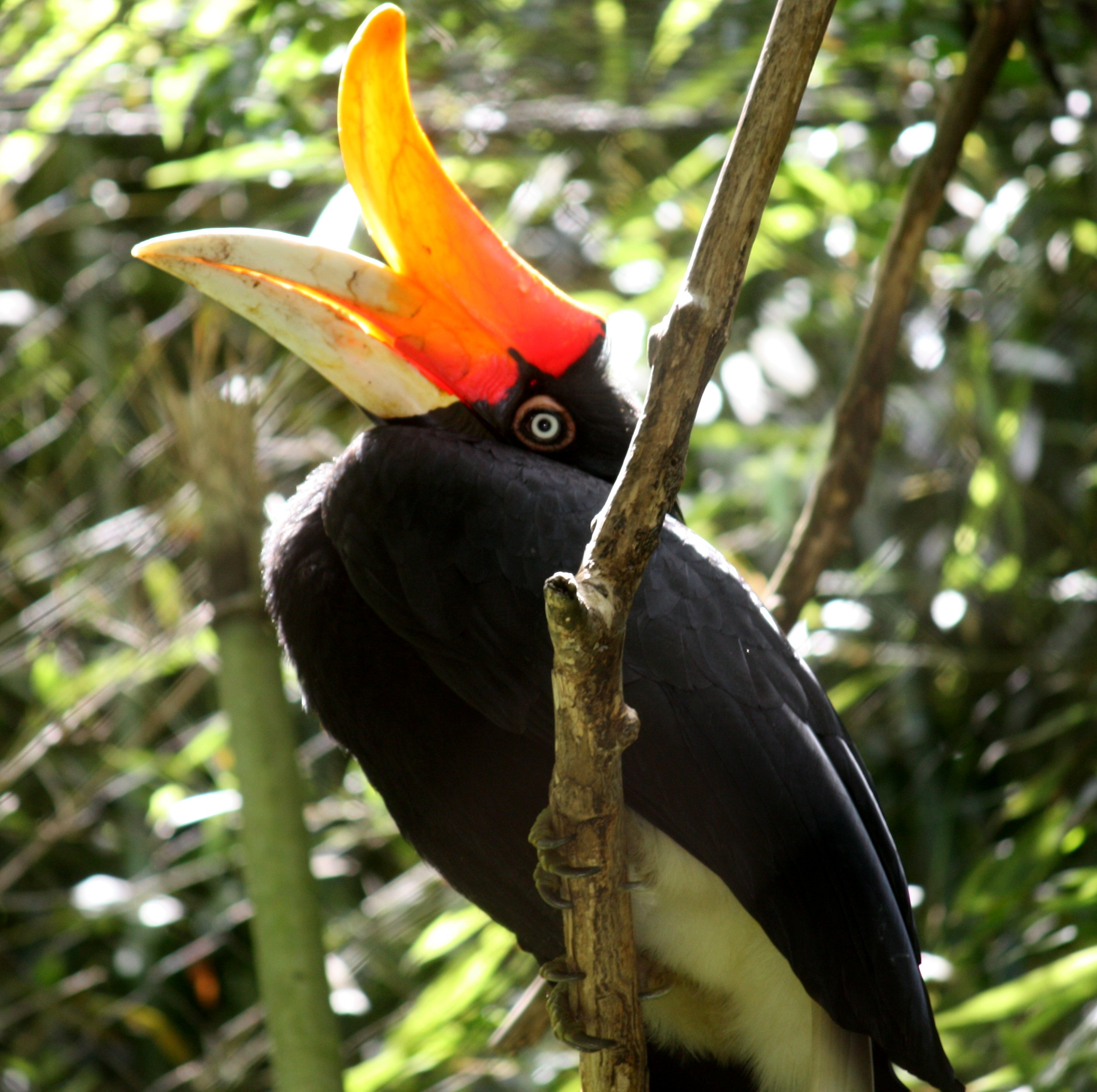

Their closest relatives are kingfishers, rollers, and bee-eaters. Essentially, hornbills and toucans adapted to their different environments in the same way, developing similar traits. While hornbills live in Africa and Asia, toucans live in Central and South America. The beaks of toucans and hornbills are an example of what scientists call convergent evolution.
#RHINOCEROS HORNBILL TOUCAN HOW TO#
This keeps the nest safe from snakes until the chicks are grown enough to leave the nest, and learn how to fly.īoth the common English and the scientific name of the family refer to the shape of the bill, “buceros” being “cow horn” in Greek. Only a small slit is left, through which the male gives her food. Then, helped by her mate, she seals herself in, covering the entrance with droppings and mud. The female hornbill lays her eggs in a hole in a tree. Hornbills generally form monogamous pairs, although some species engage in cooperative breeding. Often the first sign of an approaching hornbill is the rhythmic chuffing sound made by their wings as they fly through the air, which can be heard at long range. Southern ground hornbill booms are so loud they are sometimes mistaken for the roaring of lions. The largest assemblies of hornbills form at some roosting sites, where as many as 2400 individual birds may be found. Larger flocks sometimes form outside the breeding season. Hornbills are diurnal, generally travelling in pairs or small family groups. The casque of the helmeted hornbill from Borneo is different from all other hornbill species: its dense, ivory-like casque makes up about 10 percent of the bird’s body weight! Unfortunately, this has made it attractive to native islanders who kill the birds to use the heavy casques for ornamental This striking coloration is the result of the bird rubbing its beak and casque against the preen gland beneath the tail, which stimulates the production of an oily orange-red fluid that adds a Several species, including the striking Rhinoceros hornbill, possess a brightly coloured beak and casque. In some species it is barely perceptible and appears to serve no function beyond reinforcing the bill.

The large bill assists in fighting, preening, constructing the nest, and catching prey.Ī feature unique to the hornbills is the casque, a hollow structure that runs along the upper mandible. The most distinctive feature of the hornbills is the heavy bill, supported by powerful neck muscles as well as by the fused vertebrae. Females and males often have different colored faces and eyes. This contrasts with the brightly colored neck, face, bill, and casque in many species. Hornbills have a long tail, broad wings, and white and black, brown, or gray feathers. The largest and most massive species appears to be the southern ground hornbill which has an average weight of 3.8 kg (8.3 lb), and can weigh up to 6.3 kg (14 lb) and span about 180 cm (6 feet) across the wings. The smallest species is the black dwarf hornbill, at 99 g (3.5 oz) and 32 cm (1 foot) in length. Following their late afternoon meal, the pair duets – loud, prehistoric honks that gradually evolve into raucous laughter – and takes flight, gliding off into the evening.Hornbills show considerable variation in size. The pair has picked this particular fig tree to feed on abundant fruits that are produced at this time of year.

With a wingspan of over four feet, black plumage with a banded black-and-white tail - and the most distinctive feature of all - a big bill with scarlet and yellow casque curling upwards, these are Rhinoceros Hornbills. Suddenly, a massive shape gliding into the top of a nearby fig tree grabs your attention, followed shortly by a second figure. The steady drone of cicadas signals that the afternoon will soon be over, the day transitioning to night. Various cryptic songbirds such as bulbuls and babblers vocalize from somewhere unseen. Gargantuan trees with names such as Shorea and Dipterocarpus tower towards the sky. You’re here in the Danum Valley, deep in the wilds of Borneo. Picture yourself for a moment in a steamy rainforest in southeast Asia.


 0 kommentar(er)
0 kommentar(er)
